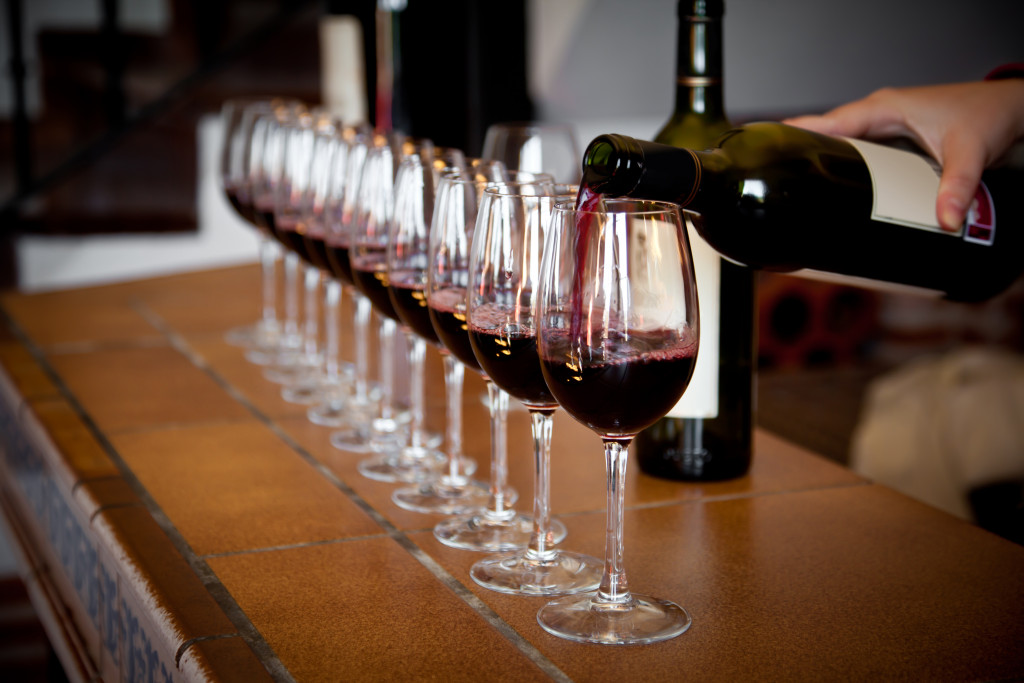- Quality control measures are important to ensure a high quality product and customer loyalty.
- Temperature control and sensory analysis services should be implemented to ensure quality.
- Inventory management is key to avoiding product overstocking or running out of popular products.
- Targeted marketing campaigns should focus on the brand’s unique selling proposition.
- Efficient cost management and streamlining processes can help maximize profitability.
The wine market revenue is predicted to reach $56.65 billion in 2023 and is projected to grow by 5.85 percent annually. The United States generates the highest revenue in the global wine market. In terms of per capita revenue, it is estimated that each person will generate $168.30 in 2023.
The wine industry is lucrative, but with the ever-increasing competition, it’s becoming increasingly challenging to keep up. The wine industry’s profitability lies in the business owner’s hands, and minimizing losses is crucial.
There are several strategies to optimize profitability and minimize losses in the wine industry. This blog post will discuss some of the most effective ones.

Quality Control
One of the most significant factors determining profitability and avoiding losses in the wine industry is the quality of the product. Poor-quality wine can lead to a loss of revenue, a decrease in customer loyalty, and negative reviews.
Quality Control Measures
Invest in quality control measures, and ensure that the wine is bottled and stored correctly. Quality control measures should include testing the alcohol content, pH levels, and aroma of the wine.
Temperature Control
Additionally, store wines in temperature-controlled cellars to preserve their quality. Invest in technology to track the aging process and bottle dates, and always offer a fresh product. Use professional sensory analysis services to ensure that your wines meet industry standards for quality.
Inventory Management
Poor inventory management can lead to an overstock or a lack of products for customers. This can lead to significant losses, especially for seasonal wines. Analyze sales trends, and implement inventory management measures to ensure that you always have the right amount of stock.
Automated Inventory Management Software
Track your inventory carefully to avoid overstocking or running out of popular products. Consider investing in automated inventory management software to make the process more accurate and efficient. Make sure you adjust your purchasing orders according to sales trends so that you don’t overstock any product while still being able to meet customer needs.
Shipping Safety
Ship bottles with durable packaging materials to ensure that your products arrive safely. Consider using packing materials that offer cushioning and shock absorbency and temperature-controlled shipping containers if needed. You should use durable wire rope chokers when the load is heavy. Wire chokers help lift heavy loads, as they offer strength and durability. Both steel and nylon chokers can be used for different load-lifting tasks. You can handle loads faster and more easily using these items due to their stability.
And to ensure you have the right wire rope, you should work with a company offering reliable load test services. Load testing involves simulating different scenarios with known weights, angles, and forces to check the integrity of the load before lifting it. The aim is to ensure that it will not break or cause any other damage during the lift.
Targeted Marketing
Marketing is crucial in any industry, and wine is no exception. Target your marketing campaigns to a specific audience to minimize the waste of resources and money on inefficient advertisement methods. Consider the customer’s lifestyle, demographics, and behaviors to get the best return on investment. To reach your targeted audience, utilize the most effective marketing channels, such as social media, emails, television commercials, and direct mail.
USP
Focus on the brand’s unique selling proposition and use creative ideas to differentiate it from competitors. A strong digital presence is essential today; use content marketing, SEO tactics, and influencer marketing to create awareness about the products.
Monitor Campaign performance
Finally, track the performance of your campaigns and analyze customer feedback for future improvements. An effective targeted marketing strategy can help build a successful brand presence in the wine industry.

Efficient Cost Management
Controlling the costs and expenses is key to maximizing profitability in the wine industry. It’s essential to keep track of all costs and expenses and minimize them wherever possible. Consider cost-saving strategies such as energy-efficient lighting and equipment, bulk purchasing, and efficient packaging.
Streamline Processes
Technology can also be used to streamline processes and reduce inefficiencies. Automating certain tasks, such as billing procedures, can help save time and money. Analyzing your costs regularly will also help you identify opportunities for cost savings. Finally, having a financial plan helps ensure that your wine business is sustainable over the long term.
Build a Strong Brand
Creating and maintaining a strong brand is essential to success in the wine business. Building your brand involves developing an identity and reputation for your wines that customers can recognize and trust. This includes focusing on great quality, consistent products, effective marketing, customer service, and good customer relations. It also means investing in packaging and designing distinctive and memorable labels.
Optimizing profitability in the wine industry requires careful planning, implementation of effective strategies, and constant monitoring. Quality control, inventory management, targeted marketing, and efficient cost management are key strategies to minimize losses and maximize profitability. Business owners can grow and flourish in the competitive wine industry by implementing these strategies.

